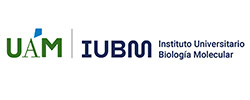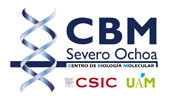Biotechnology and genetics of extreme thermophiles
Prof. Mario Mencía Caballero. Profesor Titular. Departamento de Biología Molecular. UAM.
The main objective of our group during this period has been to analyze the mechanisms of DNA transfer and those acting as defense barriers in thermophilic bacteria that could render biotechnological applications. DNA transfer and repair is enhanced in thermal environments due to the strong selective factor appointed by high temperatures against replication fidelity that results in the selection of small genomes. For Thermus thermophilus (Tth), this selection has leaded to the evolution of a polyploid genome and the most efficient natural competence apparatus (NCA) so far described. In addition, Tth can exchange DNA by direct cell contacts using “transjugation”, a process in which a DNA donation apparatus (DDA) allows the ejection of DNA from a “donor” strain with the concomitant incorporation by a competent recipient mate through its NCA.
The main focus of our research in the last two years has been the analysis of the mechanisms involved in protection against the integration of environmental DNA (eDNA) in the genome. In this context we have studied the role of a DNA primase-polymerase (Ppol) encoded by mobile element ICETh2, as anti-eDNA barrier. We found that Ppol loss of function mutations increase dramatically the transformability of the cells with eDNA by 2-3 orders of magnitude, playing apparently a defensive role that is not active against DNA transferred by a mating pair in transjugation. This differential protective activity is similar to that provided by ThAgo, a homologue of the human Argonaute protein that uses DNA-DNA interference to cleave exogenous DNA entering the cells by transformation, suggesting a role for Ppol as putative generator of ssDNA guides for ThAgo. Further work of our group has shown the relevance of Ppol for plasmid stability and the existence of Ppol-independent mechanisms for the generation of ssDNA guides for ThAgo. Our most recent work has shown a deep imbrication of Ppol in DNA repair in Tth, keeping an unexpected equilibrium between its activity and that of the excinuclease AddAB, required to generate the 3’ overhands needed to repair dsDNA breaks by homologous recombination. In such equilibrium Ppol compensates for an apparently lethal overactivity of AddAB, in such a way that only addAB loss-of-function mutants survive to the inactivation of Ppol. Future work of the group will focus on the relation of HGT and recombination pathways and use this knowledge to develop new tools for the directed evolution of proteins in Tth.


